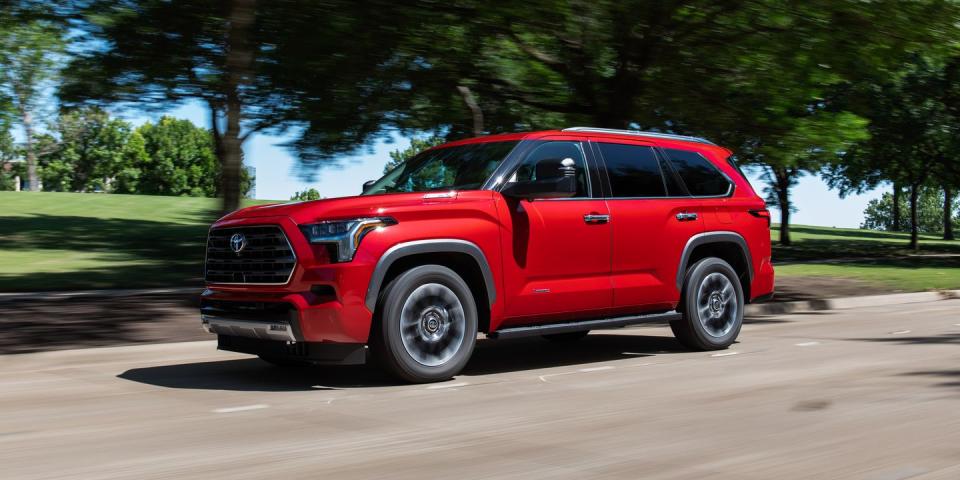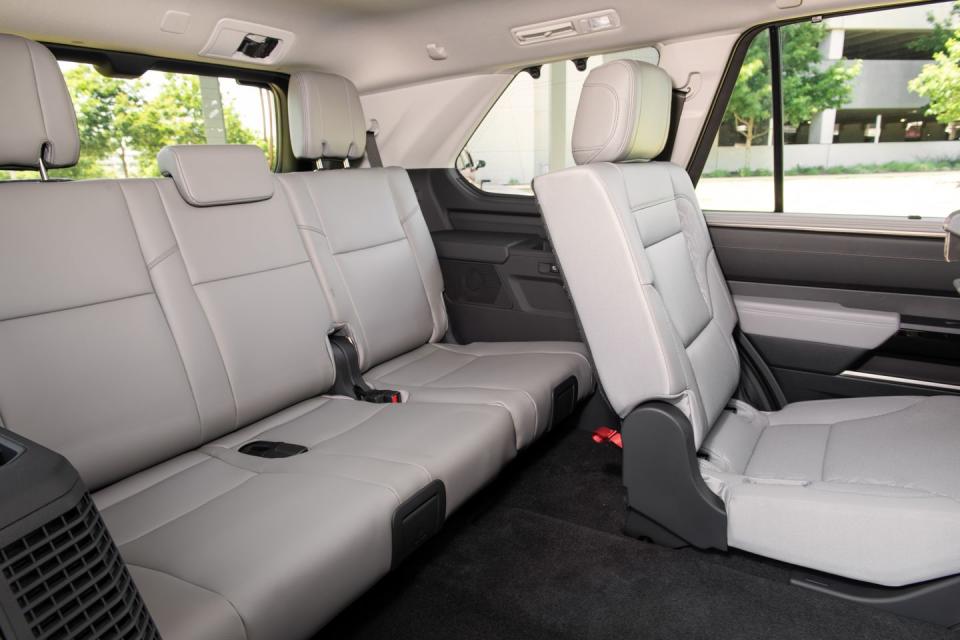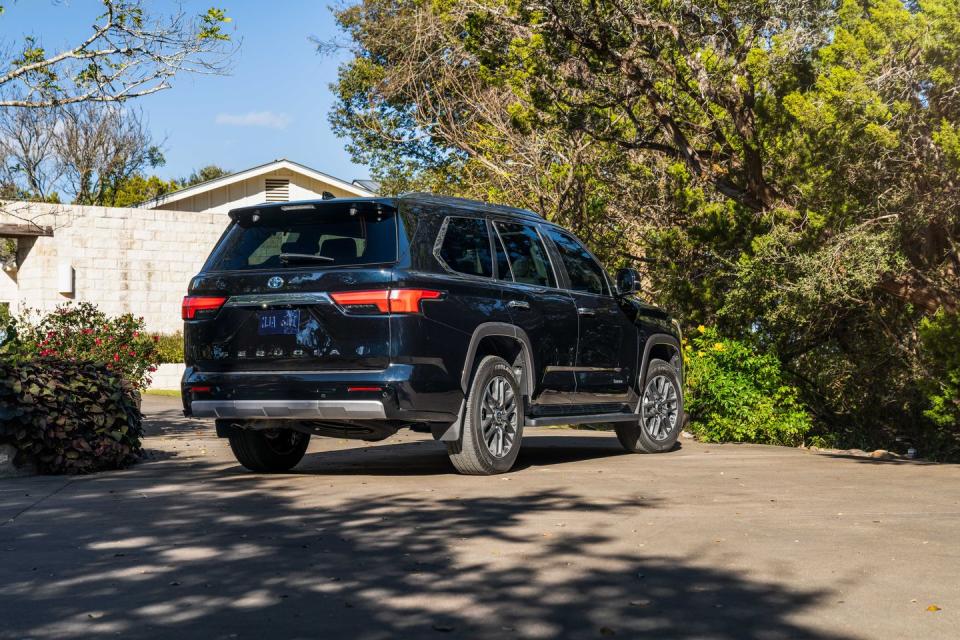2023 Toyota Sequoia Looks More Modern, Still Needs Polishing

Few new vehicles have a gestation period as long as the Toyota Sequoia's. The outgoing generation of Toyota's largest SUV arrived for 2008 and has languished for 15 model years as the rest of the full-size competition has furiously advanced in refinement, drivability, technology, and desirability. But a redesigned Sequoia is finally here for 2023, sharing its platform with the equally fresh Toyota Tundra pickup and Lexus LX600 SUV. Its platform also serves as the basis for the global Toyota Land Cruiser, which has been unceremoniously dropped from the North American market. Given all the burdens that the new Sequoia must shoulder, our expectations were understandably high when we first got behind the wheel.
On paper, Toyota's third-generation Sequoia is a solid package. Three rows of seats are standard, as is a hybridized twin-turbo 3.4-liter V-6 powertrain that makes 437 horsepower and 583 pound-feet of torque. Fuel economy is sure to improve over the outgoing model, although neither the EPA nor Toyota have reported those figures yet. Judging by the new Tundra hybrid's combined estimates of 19 to 20 mpg for four-wheel-drive models, similar numbers would be meaningful gains over the old Sequoia's 14-to-15-mpg combined ratings. Maximum towing capacity is a stout 9020 to 9520 pounds, depending on the model. And there's a wide lineup of handsomely styled trim levels, including an off-road-oriented TRD Pro model with an electronically locking rear differential, Fox dampers, and 33-inch all-terrain tires. More luxurious Limited, Platinum, and range-topping Capstone models should appeal to the mall-running crowd.

However, the new Sequoia feels only moderately accomplished on the road. The hybrid powertrain and its attendant 10-speed automatic transmission are plenty smooth and powerful when you mash the accelerator, but the rest of the Sequoia's driving behavior makes it feel every bit like the shipping-container-sized SUV that it is—in other words, unwieldy. It feels extra wide, making it harder to place in a lane than we'd like, a trait that's worsened by steering that's rather light in effort. Its brake pedal also feels squishy on initial application, which isn't a boon for driver confidence.
Rivals from General Motors are the current benchmark for large-SUV dynamics, what with their firm brake pedals, relatively communicative steering, and greater sense of what passes for agility in this segment. The Sequoia, on the other hand, seems to lean on ride quality as its strength over its Chevrolet and GMC analogues. Cruising in the Toyota's Platinum and Limited trims, we were impressed with their isolation from the road, and save for some minor wind whistling around the large exterior mirrors, their cabins remained quiet and peaceful. Rear air springs and adaptive dampers, as opposed to coil springs and passive dampers, are optional on Platinum and Capstone models, though they mostly serve a load-leveling function. On the open road, we couldn't detect any significant difference between the two setups.


 Yahoo Autos
Yahoo Autos 